Reading for IELTS Academic Practice Test- 26 | Reading Practice Tests for IELTS Academic PDF Download
Section - 1
A. THE FACT THAT there was once a Pangean supercontinent, a Panthalassa Ocean, and a Tethys Ocean, has profound implications for the evolution of multicellular life on Earth. These considerations were unknown to the scientsts of the 19th century — making their scientific deductions even more remarkable.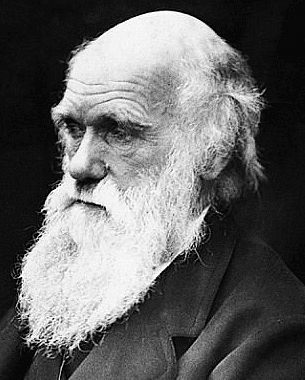
Quite independently of each other, Charles Darwin and his young contemporary Alfred Russel Wallace reached the conclusion that life had evolved by natural selection. Wallace later wrote in My Life of his own inspiration:
B. Why do some species die and some live? The answer was clearly that on the whole the best fitted lived.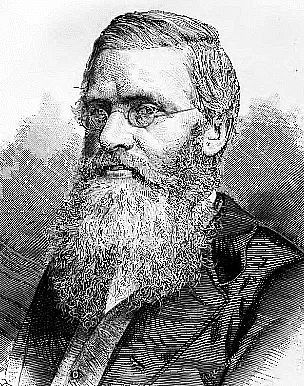 From the effects of disease the most healthy escaped; from enemies the strongest, the swiftest or the most cunning from famine the best hunters then it suddenly flashed on me that this self-acting process would improve the race, bacause in every generation the inferior would inevitably be killed off and the superior would remain, that is, the fittest would survive.
From the effects of disease the most healthy escaped; from enemies the strongest, the swiftest or the most cunning from famine the best hunters then it suddenly flashed on me that this self-acting process would improve the race, bacause in every generation the inferior would inevitably be killed off and the superior would remain, that is, the fittest would survive.
C. Both Darwin’s and Wallace’s ideas about natural selection had been influenced by the essays of Thomas Malthus in his Principles of Population. Their conclusions, however, had been the direct result of their personal observation of animals and plants in widely separated geographic
locations: Darwin from his experiences during the voyage of the Beagle, and particularly during the ship’s visit to the Galapagos Islands in the East Pacific in 1835; Wallace during his years of travel in the Amazon Basin and in the Indonesia-Australian Archipelago in the 1850s.
D. Darwin had been documenting his ideas on natural selection for many years when he received a paper on this selfsame subject from Wallace, who asked for Darwin’s opinion and help in getting it published. In July 1858, Charles Lyell and J. D Hooker, close friends of Darwin, pressed Darwin to present his conclusions so that he would not lose priority to and unknown naturalist. Presiding over the hastily called but now historic meeting of the Linnean Society in London, Lyell and Hooker explained to the distinguished members how “these two gentlemen” (who were absent: Wallace was abroad and Darwin chose not to attend), had “independently and unknown to one another, conceived the same very ingenious theory”
Presiding over the hastily called but now historic meeting of the Linnean Society in London, Lyell and Hooker explained to the distinguished members how “these two gentlemen” (who were absent: Wallace was abroad and Darwin chose not to attend), had “independently and unknown to one another, conceived the same very ingenious theory”
E. Both Darwin and Wallace had realized that the anomalous distribution of species in particular regions had profound evolutionary significance. Subsequently, Darwin spent the rest of his days in almost total seclusion thinking and writing mainly about the origin of species. In constrast, Wallace applied himself to the science of biogeography, the study of the pattern and distribution of species, and its significance, resulting in the publication of a massive two-volume work the Geographical Distribution of Animals in 1876.
F. Wallace was a gentle and modest man, but also persistent and quietly courageous. He spent years working in the most arduous possible climates and terrains, particularly in the Malay archipelago, he made patient and detailed zoological observations and collected huge number of speciments for museums and collectors-which is how he made a living. One result of his work was the conclusion that there is a distinct faunal boundary, called "Wallace’s line, " between an Asian realm of animals in Java, Borneo and the Philipiones and an Australian realm in New Guinea and Australia. In essence this boundary posed a difficult question: How on Earth did plants and animals with a clear affinity to the Northern Hemisphere meet with their Southern Hemispheric counterparts along such a distinct Malaysian demarcation zone? Wallace was uncertain about demarcation on one particular island-Celebes, a curiously shaped place that is midway between the two groups. Initially he assigned its flora-fauna to the Australian side of the line, but later he transferred it to the Asian side. Today we know the reason for his dilemma. 200MYA East and West Celebes were islands with their own natural history lying on opposite sides of the Tethys Ocean. They did not collide until about 15 MYA. The answer to the main question is that Wallace’s Line categorizes Laurasia-derived flora-fauna (the Asian) and Gondwana-derived flora-fauna (the Australian), fauna that had evolved on opposing shares of the Tethys. The closure of the Tethys Ocean today is manifested by the ongoing collision of Australia/New Guinea with Indochina/Indonesia and the continuing closure of the Mediterranean Sea-a remnant of the Western Tethys Ocean.
G. IN HIS ORIGIN OF CONTINENTS AND OCEANS, Wegener quoted at length from Wallace’s Geographical Distribution of Animals. According to Wegener’s reading, Wallace had identified three clear divisions of Australian animals, which supported his own theory of continental displacement. Wallace had shown that animals long established in southwestern Australia had an affinity with animals in South Africa, Madagascar, India, and Ceylon, but did not have an affinity with those in Asia. Wallace also showed that Australian marsupials and monotremes are clearly related to those in South America, the Moluccas, and various Pacific islands, and that none are found in neighboring Indonesia. From this and related data, Wegener concluded that the then broadly accepted “landbridge” theory could not account for this distribution of animals
and that only his theory of continental drift could explain it.
H. The theory that Wegener dismissed in preference to his own proposed that plants and animals had once migrated across now-submerged intercontinental landbridges. In 1885, one of Europe's leading geologists, Eduard Suess, theorized that as the rigid Earth cools, its upper crust shrinks and wrinkles like the withering skin of an aging apple. He suggested that the planet's seas and oceans now fill the wrinkles between once-contiguous plateaus.
I. Today, we know that we live on a dynamic Earth with shifting, colliding and separating tectonic plates, not a “withering skin”, and the main debate in the field of biogeography has shifted. The discussion now concerns “dispersalism” versus “vicarianism” runrestricted radiation of species on the one hand and the development of barriers to migration on the other. Dispersion is a short-term phenomenon—the daily or seasonal migration of species and their radiation to the limits of their natural environment on an extensive and continuous landmass. Vicarian evolution, however, depends upon the separation and isolation of a variety of species within the confines of natural barriers in the form of islands, lakes, or shallow seas—topographical features that take a long time to develop.
Dispersion is a short-term phenomenon—the daily or seasonal migration of species and their radiation to the limits of their natural environment on an extensive and continuous landmass. Vicarian evolution, however, depends upon the separation and isolation of a variety of species within the confines of natural barriers in the form of islands, lakes, or shallow seas—topographical features that take a long time to develop.
Questions 1-5: Use the information in the passage to match the people (listed A-E) with opinions or deeds below. Write the appropriate letters A-E in blanks 1-5 on your answer sheet.
A. Suess ______
B . Wallace ______
C. Darwin and Wallace ______
D. Wegener ______
E. Lyell and Hooker ______
Q.1. urged Darwin to publish his scientific findings
Q.2. Depicted physical feature of earth's crust.
Q.3. believed in continental drift theory while rejecting another one
Q.4. Published works about wildlife distribution in different region.
Q.5. Evolution of species is based on selection by nature.
Questions 6-8: The reading Passage has nine paragraphs A -I.
Which paragraph contains the following information?
Write the correct letter A-I in boxes 6-8 on your answer sheet.
Q.6. Best adaptable animal survived on the planet.
Q.7. Boundary called Wallace's line found between Asia and Australia.
Q.8. Animal relevance exists between Australia and Africa.
Questions 9-13
Complete the following summary of the paragraphs of Reading Passage, using no more than two words from the Reading Passage for each answer. Write your answers in blanks 9-13 on your answer sheet.
Wegener found that continental drift instead of "land bridge" theory could explain strange species' distribution phenomenon. In his theory, vegetation and wildlife____9____ intercontinentally. However, Eduard Suess compared the wrinkle of crust to____10_____of an old apple. Now it is well known that we are living on the planet where there are _____11_____in constant mobile states instead of what Suess described Hot spot in biogeography are switched to oncerns between two terms:"_____12____" and “____13_____”.
Section - 2
Chinese Yellow Citrus Ant for Biological Control
A. In 1476, the farmers of Berne in Switzerland decided, according to this story, there was only one way to rid their fields of the cutworms attacking their crops. They took the pests to court. The worms were tried, found guilty and excommunicated by the archbishop.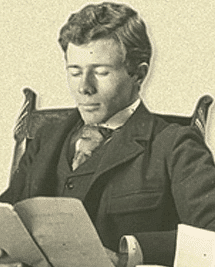 In China, farmers had a more practical approach to pest control. Rather than rely on divine intervention, they put their faith in frogs, ducks and ants. Frogs and ducks were encouraged to map up the pests in the paddies and the occasional plague of locusts. But the notion of biological control began with an ant. More specifically, the story says, it started with the predatory yellow citrus ant is a type of weaver ant, which has been polishing off pests in the orange groves of southern China for at least 1700 years. The yellow citrus ant $0 is a type of weaver ant, which binds leaves and twigs with silk to form a neat, tent-like nest. In the beginning, farmers made do with the odd ants' nest here and there. But it wasn't long before growing demand led to the development of a thriving trade in nests and a new type of agriculture—ant farming.
In China, farmers had a more practical approach to pest control. Rather than rely on divine intervention, they put their faith in frogs, ducks and ants. Frogs and ducks were encouraged to map up the pests in the paddies and the occasional plague of locusts. But the notion of biological control began with an ant. More specifically, the story says, it started with the predatory yellow citrus ant is a type of weaver ant, which has been polishing off pests in the orange groves of southern China for at least 1700 years. The yellow citrus ant $0 is a type of weaver ant, which binds leaves and twigs with silk to form a neat, tent-like nest. In the beginning, farmers made do with the odd ants' nest here and there. But it wasn't long before growing demand led to the development of a thriving trade in nests and a new type of agriculture—ant farming.
B. For an insect that bites, the yellow citrus ant is remarkably popular. Even by ant standards, Oecophylla smaragdina is a fearsome predator. It's big, runs fast and has a powerful nip - painful to humans but lethal to many of the insects that plague the orange groves of Guangdong and Guangxi in southern China. And for at least 17 centuries. Chinese orange growers have harnessed these sixlegged killing machines to keep their fruit groves healthy and productive. The story explains that citrus - a fruits evolved in the Far East and the Chinese discovered the delights of their flesh early on. As the ancestral home of oranges, lemons and pomelos, China also has the greatest diversity of citrus pests. And the trees that produce the sweetest fruits, the mandarins—or kan-attract a host of planteating insects, from black ants and sap-sucking mealy bugs to leaf-devouring caterpillars. With so many enemies, fruit growers clearly had to have some way of protecting their orchards.
C. The West did not discover the Chinese orange growers' secret weapon until the early 20th century. At the time, Florida was suffering an epidemic of: itrus canker and in 1915 Walter Swingle, a plant physiologist working for the US Department of Agriculture, was, the story says, sent to China in search of varieties of orange that were resistant to the disease. Swingle spent some time studying the citrus orchards around Guangzhou, and there he came across the story of the cultivated ant. These ants, he was told, were "grown" by the people of a small village nearby who sold them to the orange growers by the nestful.
D. The earliest report of citrus ants at work among the orange trees appears in a book on tropical and subtropical botany written by His Han in AD 304. "The people of Chiao-Chih sell in their markets ants in bags of rush matting. The nests are like silk. The bags are all attached to twigs and leaves which, with the ants inside the nests, are for sale. The ants are reddish-yellow in colour, bigger than ordinary ants. In the south if the kan trees do not have this kind of ant, the fruits will all be damaged by many harmful insects, and not a single fruit will be perfect."
E. Initially, farmers relied on nests which they collected from the wild or bought in the market — where trade in nests was brisk. 'It is said that in the south orange trees which are free of ants will have wormy fruits. Therefore the people race to buy nests for their orange trees,' wrote Liu Hsun in Strange Things Noted in the South, written about AD 890. The business quickly became more sophisticate. From the 10th century, country people began to trap ants in artificial nests baited with fat. "Fruit growing families buy these ants from vendors who make a business of collecting and selling such creatures," wrote Chuang Chi-Yu in 1130. "They trap them by filling hogs' or sheep's bladders with fat and placing them with the cavities open next to the ants' nests. They wait until the ants have migrated into the bladders and take them away. This is known as 'rearing orange ants'." Farmers attached the bladders to their trees, and in time the ants spread to other trees and built new nests. By the 17th century, growers were building bamboo walkways between their trees to speed the colonization of their orchards. The ants ran along these narrow bridges from one tree to another and established nests "by the hundreds of thousands".
F. Did it work? The orange growers clearly thought so. One authority, Chi Ta— Chun, writing in 1700, stressed how important it was to keep the fruit trees free of insect pests, especially caterpillars. "It is essential to eliminate them so that the trees are not injured. But hand labour is not nearly as efficient as ant power..." Swingle was just as impressed. Yet despite this reports, many Western biologists were skeptical. In the West, the idea of using one insect to destroy another was new and highly controversial. The first breakthrough had come in 1888, when the infant a orange industry in California had been saved from extinction by the Australian vedalia beetle. This beetle was the only thing that had made any inroad into the explosion of cottony cushion scale that was threatening to destroy the state's citrus crops. But, as Swingle now knew, California’s "first" was nothing of the sort. The Chinese had been expert in biocontrol for many centuries.
G. The story goes on to say that the long tradition of ants in the Chinese orchards only began to waver in the 1950s and 1960s with the introduction of powerful organic (I guess the author means chemical insecticides. Although most fruit growers switched to chemicals, a few hung onto their ants. Those who abandoned ants in favour of chemicals quickly became disillusioned. As costs soared and pests began to develop resistance to the chemicals, growers began to revive the old ant patrols. They had good reason to have faith in their insect workforce. Research in the early 1960s showed that as long as there were enough ants in the trees, they did an excellent job of dispatching some pests— mainly the larger insects—and had modest success against others. Trees with yellow ants produced almost 20 per cent more healthy leaves than those without. More recent trials have shown that these trees yield just as big a crop as those protected by expensive chemical sprays.
H. One apparent drawback of using ants—and one of the main reasons for the early skepticism by Western scientists—was that citrus ants do nothing to control mealy bugs, waxy-coated scale insects which can do considerable damage to fruit frees. In fact, the ants protect mealy bugs in exchange for the sweet honeydew they secrete. The orange growers always denied this was a problem but Western scientists thought they knew better. Research in the 1980s suggests that the growers were right all along. Where mealy bugs proliferate under the ants' protection they are usually heavily parasitized and this limits the harm they can do. Orange growers who rely on carnivorous ants rather than poisonous chemicals maintain a better balance of species in their orchards. While the ants deal with the bigger insect pests, other predatory species keep down the numbers of smaller pests such as scale insects and aphids. In the long run, ants do a lot less damage than chemicals-and they're certainly more effective than excommunication.
Questions 14-18: Use the information in the passage to match the year (listed A-G) with correct description below. Write the appropriate letters A-G in boxes 14-18 on your answer sheet.
NB you may use any letter more than once
Q.14. First record of ant against pests written.
Q.15. WS studied ant intervention method in China.
Q.16. First case of orange crops rescued by insect in western world.
Q.17. Chinese farmers start to choose chemical method.
Q.18. A book wrote mentioned ways to trap ants.
Questions 19-26: Do the following statements agree with the information given in Reading
Passage 2? In boxes 19-26 on your answer sheet, write
- TRUE: if the statement is true
- FALSE: if the statement is false
- NOT GIVEN: if the information is not given in the passage
Q.19. China has the most citrus pests counted in types in the world.
Q.20. Swingle came to China in order to search an insect for the US government.
Q.21. Western people were impressed by Swingle's theory of pest prevention.
Q.22. Chinese farmers realised that price of pesticides became expensive.
Q.23. Some Chinese farmers start to abandon the use of pesticide.
Q.24. Trees without ants had grown more unhealthy leaves than those with.
Q.25. Yield of fields using ants is larger a crop than that using chemical pesticides.
Q.26. Chinese orange farmers proposed that ant protection doesn't work out of China.
Section - 3
You should spend about 20 minutes on Questions 27-40, which are based on Reading Passage 3 on the following pages.
Mechanisms of Linguistic Change
A. The changes that have caused the most disagreement are those in pronunciation. We have various sources of evidence for the pronunciations of earlier times, such as the spellings, the treatment of words borrowed from other languages or borrowed by them, the descriptions of contemporary grammarians and spelling-reformers, and the modern pronunciations in all the languages and dialects concerned From the middle of the sixteenth century, there are in England writers who attempt to describe the position of the speech-organs for the production of English phonemes, and who invent what are in effect systems of phonetic symbols. These various kinds of evidence, combined with a knowledge of the mechanisms of speech-production, can often give US a very good idea of the pronunciation of an earlier age, though absolute certainty is never possible.
B. When we study the pronunciation of a language over any period of a few generations or more, we find there are always large-scale regularities in the changes: for example, over a certain period of time, just about all the long [a:] vowels in a language may change into long [e:] vowels, or all the [b] consonants in a certain position (for example at the end of a word) may change into [p] consonants. Such regular changes are often called sound laws. There are no universal sound laws (even though sound laws often reflect universal tendencies), but simply particular sound laws for one given language (or dialect) at one given period.
C. It is also possible that fashion plays a part in the process of change. It certainly plays a part in the spread of change: one person imitates another, and people with the most prestige are most likely to be imitated, so that a change that takes place in one social group may be imitated (more or less accurately) by speakers in another group. When a social group goes up or down in the world, its pronunciation may gain or lose prestige. It is said that, after the Russian Revolution of 1917, the upper-class pronunciation of Russian, which had formerly been considered desirable, became on the contrary an undesirable kind of accent to have, so that people tried to disguise it. Some of the changes in accepted English pronunciation in the seventeenth and eighteenth centuries have been shown to consist in the replacement of one style of pronunciation by another style already existing, and it is likely that such substitutions were a result of the great social changes of the period: the increased power and wealth of the middle classes, and their steady infiltration upwards into the ranks of the landed gentry, probably carried elements of middle-class pronunciation into upper-class speech.
D. A less specific variant of the argument is that the imitation of children is imperfect: they copy their parents’ speech, but never reproduce it exactly. This is true, but it is also true that such deviations from adult speech are usually corrected in later childhood. Perhaps it is more significant that even adults show a certain amount of random variation in their pronunciation of a given phoneme, even if the phonetic context is kept unchanged. This, however, cannot explain changes in pronunciation unless it can be shown that there is some systematic trend in the failures of imitation: if they are merely random deviations they will cancel one another out and there will be no net change in the language.
This is true, but it is also true that such deviations from adult speech are usually corrected in later childhood. Perhaps it is more significant that even adults show a certain amount of random variation in their pronunciation of a given phoneme, even if the phonetic context is kept unchanged. This, however, cannot explain changes in pronunciation unless it can be shown that there is some systematic trend in the failures of imitation: if they are merely random deviations they will cancel one another out and there will be no net change in the language.
E. One such force which is often invoked is the principle of ease, or minimization of effort. The change from fussy to fuzzy would be an example of assimilation, which is a very common kind of change. Assimilation is the changing of a sound under the influence of a neighbouring one. For example, the word scant was once skamt, but the m has been changed to n under the influence of the following t. Greater efficiency has hereby been achieved, because n and / Ư are articulated in the same place (with the tip of the tongue against the teeth-ridge), whereas m is articulated elsewhere (with the two lips). So the place of articulation of the nasal consonant has been changed to conform with that of the following plosive. A more recent example of the same kind of thing is the common pronunciation of football as foopball.
F. Assimilation is not the only way in which we change our pronunciation in order to increase efficiency. It is very common for consonants to be lost at the end of a word: in Middle English, word-final [-n] was often lost in unstressed syllables, so that baken ‘to bake’ changed from [ba:kon] to ['ba:ko],and later to [ba:k]. Consonant-clusters are often simplified. At one time there was a [t] in words like castle and Christmas, and an initial [k] in words like knight and know. Sometimes a whole syllable is dropped out when two successive syllables begin with the same consonant (haplology): a recent example is temporary, which in Britain is often pronounced as if it were tempory.
Questions 27-30: Complete the summary below.
Choose NO MORE THAN THREE WORDS from the passage for each answer. Write your answers in boxes 27-30 on your answer sheet.
The pronunciation of living language undergo changes throughout thousands of years. Large scale regular Changes are usually called 27_____. There are three reasons for these changes. Firstly, the influence of one language on another; when one person imitates another pronunciation (the most prestige's], the imitation always partly involving factor of 28_____. Secondly, the imitations of children from adults' language sometimes are 29______, and may also contribute to this change if there are insignificant deviations tough later they may be corrected Finally, for those random variations in pronunciation, the deeper evidence lies in the 30______or minimization of effort.
Questions 31-37: Do the following statements agree with the information given in Reading Passage 3? In boxes 31-37 on your answer sheet, write
- TRUE: if the statement agrees with the information
- FALSE: if the statement contradicts the information
- NOT GIVEN: if there is no information on this
Q.31. it is impossible for modern people to find pronunciation of words in an earlier age
Q.32. The great change of language in Russian history is related to the rising status and fortune of middle classes.
Q.33. All the children learn speeches from adults while they assume that certain language is difficult to imitate exactly.
Q.34. Pronunciation with causal inaccuracy will not exert big influence on language changes.
Q.35. The link of ‘mt’ can be influenced being pronounced as 'nt’
Q.36. The [g] in gnat not being pronounced will not be spelt out in the future.
Q.37. The sound of 'temporary' cannot wholly present its spelling.
Questions 38-40 Look at the following sentences and the list of statements below. Match each statement with the correct sentence, A-D.
Write the correct letter, A-D, in boxes 38-40 on your answer sheet
A. Since the speakers can pronounce it with less effort
B. Assimilation of a sound under the influence of a neighbouring one
C. It is a trend for changes in pronunciation in a large scale in a given period
D. Because the speaker can pronounce [n] and [t] both in the same time
Q.38. As a consequence, ‘b’ will be pronounced as ‘p’
Q.39. The pronunciation of [mt] changed to [nt]
Q.40. The omit of 't' in the sound of Christmas
Answers:
Section - 1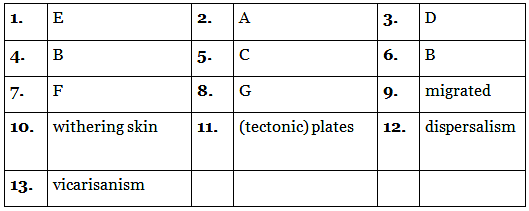 Section - 2
Section - 2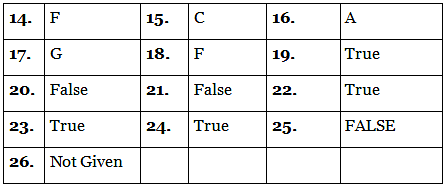 Section - 3
Section - 3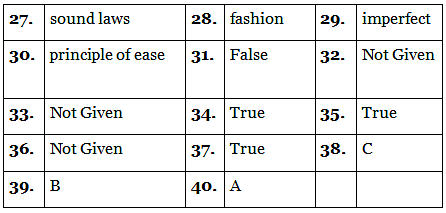

|
Explore Courses for IELTS exam
|

|

















